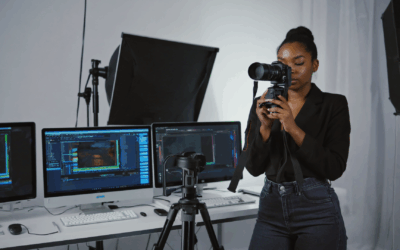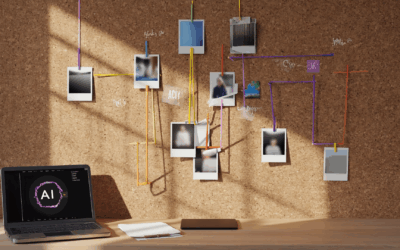Welcome to this comprehensive guide on mastering AI photography products. As technology evolves, artificial intelligence (AI) has become an essential part of modern photography, helping both professional and amateur photographers capture stunning images in various conditions. In this guide, we will explore the different AI-powered photography products, their features, and how to make the best use of them to achieve exceptional results. So, whether you’re a beginner or an experienced photographer, this guide will provide you with valuable insights into the world of AI photography.
Table of Contents
- Understanding AI Photography
- Types of AI Photography Products
- Benefits of AI Photography Products
- How to Choose the Best AI Photography Products
- Popular AI Photography Products
- Steps to Master AI Photography Products
- Tips to Improve Your AI Photography Skills
- Conclusion
Understanding AI Photography
AI photography refers to the use of artificial intelligence algorithms in various aspects of capturing, editing, and enhancing images. These algorithms help simplify the photography process, improve image quality, and solve common challenges faced by photographers. Some common AI applications in photography include auto-focus, auto-exposure, color correction, noise reduction, and image recognition.
Key Terms and Concepts
- Machine Learning: A subset of AI that enables computer systems to learn from data and improve their performance over time without being explicitly programmed.
- Deep Learning: A type of machine learning using artificial neural networks that can process large amounts of data and perform complex tasks, such as image recognition.
- Computer Vision: A field of study that focuses on helping computers interpret and understand visual information from the world, such as images or videos.
- Image Processing: A process of manipulating and enhancing digital images using algorithms and computer programs.
Types of AI Photography Products
There are various AI-powered photography products available in the market, ranging from hardware to software solutions. Some of the main types of AI photography products include:
Camera Systems with Built-in AI
Modern cameras, especially smartphones and mirrorless systems, come with built-in AI features that help photographers capture better images. These features can include face detection, eye autofocus, scene recognition, and more.
AI-Powered Image Editing Software
AI-based image editing software and apps enable users to quickly and easily enhance their photos by automatically adjusting exposure, color balance, and composition. Some popular AI-powered editing tools include Adobe Photoshop, Luminar AI, and Topaz Labs plugins.
AI-Generated Art and Filters
AI algorithms can create unique, stylized versions of photos using filters and effects that mimic famous art styles or add creative elements.
Benefits of AI Photography Products
Integrating AI into photography products brings several benefits, including:
- Improved Image Quality: AI can help optimize camera settings and image processing techniques, enabling photographers to capture better images in various lighting and environmental conditions.
- Time-saving: Using AI-powered tools, photographers can edit and enhance images faster and more efficiently, reducing the time spent on manual adjustments.
- Greater Creativity: AI-generated art and filters provide exciting and unique ways to transform images, encouraging photographers to experiment with new styles, effects, and compositions.
How to Choose the Best AI Photography Products
When selecting the best AI photography products for your needs, consider the following factors:
- Features and Functionality: Assess the product’s AI capabilities, including autofocus, exposure, color correction, scene recognition, and more, to ensure they meet your specific requirements.
- Usability: Look for intuitive, user-friendly products that make it easy to access and utilize AI features without a steep learning curve.
- Compatibility: Ensure the product is compatible with your existing photography equipment, such as your camera, lenses, or editing software.
- Price: Compare the cost of various AI photography products and find the right balance between price and quality that fits your budget.
Popular AI Photography Products
Here are some popular AI-powered photography products in the market:
- Adobe Photoshop and Lightroom: Offers AI-powered editing tools, such as Enhance Details, Select Subject, and Content-Aware Fill, that streamline the editing process.
- Luminar AI: A photo editing software focused on AI-driven features like image enhancement, sky replacement, and portrait retouching.
- Topaz Labs AI Plugins: A suite of AI-based image enhancement tools, including Gigapixel AI, DeNoise AI, and Sharpen AI, that integrate with popular photo editing software.
- Google Pixel and Apple iPhone: These flagship smartphones feature advanced AI-powered camera systems that optimize settings based on the subject and lighting conditions.
Steps to Master AI Photography Products
To become proficient with AI photography products, follow these steps:
- Understand the fundamentals of photography, including exposure, composition, and lighting techniques.
- Learn the artificial intelligence features and capabilities of your chosen AI-powered photography product.
- Practice using the AI features in different situations and conditions to gain experience and improve your skills.
- Analyze the results and make adjustments to fine-tune the AI settings and achieve better outcomes.
- Stay updated with new developments and improvements in AI technology that can further enhance your photography.
Tips to Improve Your AI Photography Skills
Here are some tips to help you get the most out of AI photography products:
- Experiment: Try different AI features and settings to understand their impact on your images and determine which options work best for your needs.
- Customize: Configure the AI settings to suit your preferences and photography style, rather than relying solely on default settings.
- Combine AI with Manual Controls: Use AI as a starting point, and then apply manual adjustments to fine-tune your photos as needed.
- Stay Informed: Follow photography blogs, forums, and social media channels to stay updated on AI advancements and techniques.
Conclusion
AI photography products offer remarkable opportunities to enhance your photography skills and streamline your editing process. By understanding the various types of AI-powered tools, their benefits, and how to choose the right products for your needs, you can take your photography to new heights. Combine this with regular practice, experimentation, and staying informed about the latest developments in AI technology, and you’ll be well on your way to mastering the world of artificial intelligence in photography.




0 Comments